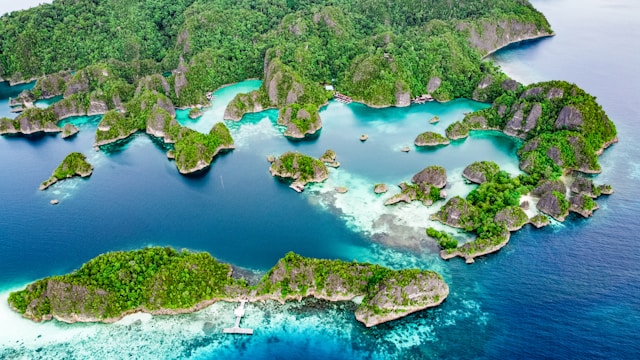Nestled in the far northern reaches of Vietnam, the Ha Giang Loop is a motorcycle adventure like no other. Winding through misty mountains, dramatic karst landscapes, and ethnic minority villages, it’s often referred to as one of the most scenic rides in Southeast Asia. For first-time riders, understanding the Ha Giang Loop map and where to stop is key to unlocking its magic.
In this guide, we’ll explore 10 essential stops on the Ha Giang Loop—each one offering breathtaking views, cultural insight, or authentic experiences that make your trip unforgettable.
1. Ha Giang City – The Official Starting Point
Your journey begins in Ha Giang City, the provincial capital and the gateway to the loop. Here, you’ll find motorbike rentals, last-minute gear shops, guesthouses, and road maps. It’s the perfect place to rest, stock up, and plan your route.
Why it matters: All loop routes stem from here; it’s your chance to prep.
Pro tip: Visit the Ha Giang Museum for context about the region’s ethnic groups and history.
2. Quan Ba – The Gateway to Heaven’s Gate Pass
Located around 45 km from Ha Giang City, Quan Ba is the first major scenic stop. Here, you’ll pass through the Heaven’s Gate Pass, offering panoramic views of lush valleys and terraced fields. Don’t miss the Twin Mountains (Fairy Bosom)—a natural geological marvel with local legends behind it.
Must-see: Quan Ba Heaven Gate viewpoint.
Great for: Sunrise photos and stretching your legs on short hikes.
3. Yen Minh – Rolling Hills and Serene Landscapes
Yen Minh is often the first overnight stop for loop riders. The town is nestled in a peaceful valley surrounded by pine-covered hills. The ride here is relaxing, with wide roads and beautiful open stretches.
Why it’s ideal for first-timers: Less traffic and smooth roads.
Top tip: Explore nearby small villages like Na Khe for local culture and food.
4. Dong Van – Culture, History, and the Old Quarter
Dong Van is a cultural highlight of the loop and a UNESCO-recognized geopark. Its Old Quarter features French colonial architecture and a weekend market bustling with ethnic H’mong, Tay, and Dao people in traditional attire.
Top attraction: Dong Van Karst Plateau Geopark.
Don’t miss: Climb Don Cao Fortress for 360-degree views at sunset.
5. Lung Cu Flag Tower – The Northernmost Point of Vietnam
If you’re already in Dong Van, take a detour to the Lung Cu Flag Tower, just 25 km north. This symbolic monument marks the northernmost point of Vietnam and is a proud symbol of national unity.
What to expect: A steep climb with epic views over China and Vietnam.
Fun fact: Local legend says the tower’s shadow touches both countries at once.
6. Ma Pi Leng Pass – The Crown Jewel of the Loop
Often referred to as the most breathtaking part of the Ha Giang Loop, Ma Pi Leng Pass connects Dong Van and Meo Vac. It’s a dramatic stretch of road carved into cliffs above the emerald Nho Que River.
Must-do: Stop at “Sky Walk” viewpoints for photos.
Adventure option: Take a boat ride along the Nho Que River for a new perspective.
7. Meo Vac – Local Markets and Cultural Immersion
After descending from Ma Pi Leng, you’ll reach Meo Vac, a small but lively town surrounded by limestone mountains. Its Sunday market is one of the most colorful in northern Vietnam, offering a deep look into the region’s ethnic diversity.
Great for: Authentic souvenirs, local music, and traditional food.
Stay tip: Try a homestay for cultural immersion.
8. Du Gia – Waterfalls, Rice Fields, and Peaceful Vibes
Du Gia is a hidden gem that’s rapidly gaining popularity for its serene vibe, beautiful rice paddies, and refreshing waterfalls. The ride here is a bit more rugged, making it exciting for adventurers but still manageable for first-time riders.
Top activity: Swim in Du Gia Waterfall and chill with locals.
Why it’s special: It offers a peaceful break from the more touristy stops.
9. Lung Tam Village – H’mong Handicrafts and Textiles
On your way back toward Ha Giang City, stop at Lung Tam Village, famous for its traditional H’mong textile weaving. You’ll witness artisans hand-dyeing fabrics using natural indigo and learn how intricate patterns are woven by hand.
Perfect for: Picking up handmade scarves, bags, and souvenirs.
Support local: Purchases directly help preserve the local economy and craft traditions.
10. Nam Dam Village – A Cultural Finish
Located near Quan Ba, Nam Dam Village is a traditional Dao ethnic village where you can stay in clay-walled homes and learn about local customs. It’s an ideal place to unwind before returning to Ha Giang City.
Cultural highlight: Try local herbal baths and traditional meals.
Photo opportunity: Morning fog rolling over the village rooftops is magical.
Planning Your Route: Sample 4-Day Ha Giang Loop Itinerary
Day 1: Ha Giang City → Quan Ba → Yen Minh
Day 2: Yen Minh → Dong Van → Lung Cu
Day 3: Dong Van → Ma Pi Leng → Meo Vac → Du Gia
Day 4: Du Gia → Lung Tam → Nam Dam → Ha Giang City
You can shorten or extend this based on how much time you want to explore.
Safety Tips for First-Time Ha Giang Loop Riders
Riding the loop is thrilling, but it comes with challenges—especially for first-timers. Here are a few tips to ensure a safe ride:
Wear a proper helmet and safety gear. Don’t skimp.
Drive slowly—especially around tight mountain curves.
Check your brakes and tires before setting out.
Download offline maps. Cell service is spotty in remote areas.
Avoid night riding. Roads can be unlit and dangerous after dark.
Conclusion: The Ha Giang Loop Map Leads to Adventure
The Ha Giang Loop map is more than just a route—it’s a journey through culture, landscape, and raw beauty. From dramatic mountain passes to peaceful villages, the 10 essential stops we’ve outlined give you a rich and diverse experience, whether it’s your first time riding or your first time in Vietnam.
So gear up, grab a reliable bike, and set your sights on Vietnam’s wild frontier. The road awaits—and every turn promises a new discovery.
FAQs About the Ha Giang Loop Map
1. Do I need a special license to ride the Ha Giang Loop?
Yes, ideally an International Driving Permit (IDP) with a motorcycle endorsement. However, many rental shops still allow tourists without one, though it’s technically not legal and may affect insurance coverage.
2. How many days do I need for the Ha Giang Loop?
Most travelers complete the loop in 3 to 5 days. Four days is ideal for first-timers to enjoy the scenery without rushing.
3. Is it safe to do the Ha Giang Loop alone?
Yes, it’s generally safe. The locals are helpful, and the route is popular among backpackers. Still, ride cautiously, and let someone know your itinerary.
4. Can I do the loop with a guide?
Absolutely. Many companies offer guided tours, which are great if you’re nervous about navigating or riding solo. It also helps with cultural immersion.
5. What should I pack for the Ha Giang Loop?
Pack light but include essentials:
Rain jacket
Warm clothes (it gets cold in the mountains)
Sunscreen & sunglasses
First-aid kit
Offline map app (like Maps.me)







